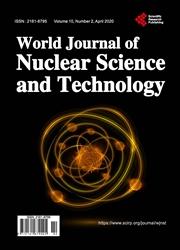Analysis of Materials for Heat Transport in Tokamaks
引用次数: 0
Abstract
Every nuclear power reactor, whether of fusion or fission, is essentially a thermal system that generates electricity. In this sense, there are several problems in relation to this heat transport. The model of plasma confinement by magnetic force, in the nuclear fusion (sterellator and tokamak), has only been 20 years and recently some success in the quality of the generated plasma has been achieved. However, due to the large amount of energy coming from the plasma, the choice of the material that will carry the generated energy is quite troublesome, due to the need to handle a very high temperature for the nuclear fission standards. Solutions are explored by the scientific community to transport the energy generated in the case of the primary circuit, after exceeding breakeven temperature and models that are based on the fission reactors of the fourth generation and those currently in operation, to search for solutions regarding the transport of heat generated for the generation of electric energy. Several materials such as pressurized water, sodium, helium and boron have been considered and studied to form the primary heat transfer circuit for the exchanger. A thorough analysis of these materials is necessary. This research looked at some of these materials for heat transport and power generation. Lithium and helium were found to be the probable materials for conveying heat and cooling in the blanket. The results show that research on blanket materials needs more attention. The quality of these materials needs to be improved by material research, with the ODS EUROFER alloy and other research to reduce material erosion by helium nano bubbles. Plasma quality needs to be improved to keep constant and free of impurities when using lithium in liquid form.托卡马克热传输材料分析
每一个核反应堆,无论是聚变反应堆还是裂变反应堆,本质上都是一个发电的热系统。从这个意义上讲,存在与这种热传输有关的几个问题。在核聚变(sterellator和托卡马克)中,磁力约束等离子体的模型才成立20年,最近在产生等离子体的质量方面取得了一些成功。然而,由于来自等离子体的大量能量,由于核裂变标准需要处理非常高的温度,因此携带所产生能量的材料的选择相当麻烦。科学界探索了在超过盈亏平衡温度后输送初级电路中产生的能量的解决方案,并基于第四代裂变反应堆和目前正在运行的裂变反应堆的模型,以寻找有关输送产生电能的热量的解决方案。考虑并研究了几种材料,如加压水、钠、氦和硼,以形成换热器的主传热回路。对这些材料进行彻底分析是必要的。这项研究着眼于其中一些用于热传输和发电的材料。锂和氦被发现可能是在毯子中输送热量和冷却的材料。研究结果表明,毛毯材料的研究需要更多的关注。这些材料的质量需要通过材料研究来提高,ODS EUROFER合金和其他研究可以减少氦纳米气泡对材料的侵蚀。当使用液态锂时,需要提高等离子体质量以保持恒定且无杂质。
本文章由计算机程序翻译,如有差异,请以英文原文为准。
求助全文
约1分钟内获得全文
求助全文

 求助内容:
求助内容: 应助结果提醒方式:
应助结果提醒方式:


